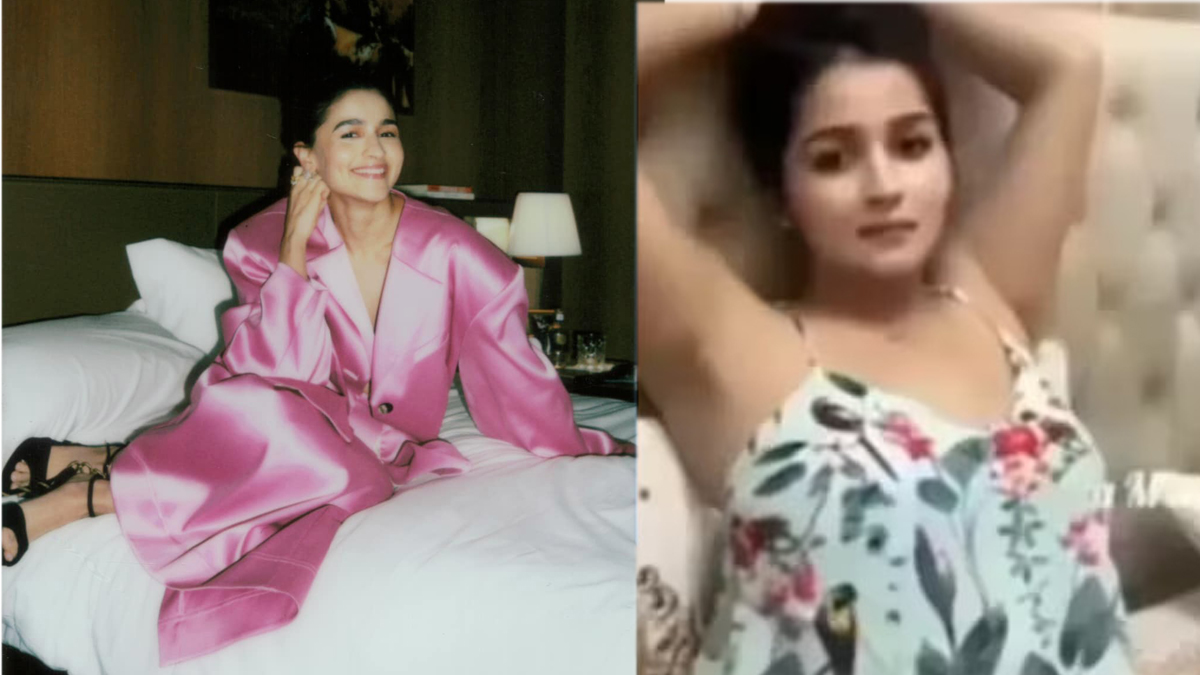
Concerns Rise as Deepfake Video of Alia Bhatt Circulates Online

In a disturbing turn of events, Bollywood actress Alia Bhatt has fallen prey to the insidious reach of deepfake technology. This comes in the wake of similar incidents involving actresses Rashmika Mandanna, Katrina Kaif, and Kajol. A video, now circulating widely on various social media platforms, exhibits a morphed face of Alia Bhatt pasted onto someone else’s body, raising serious concerns about the misuse of artificial intelligence. The actress is yet to respond to this latest controversy, which has added fuel to the ongoing debate about the potential threats posed by deepfake technology.
The Deepfake Incidents:
The latest video in question portrays a girl bearing a striking resemblance to Alia Bhatt, dressed in a blue floral co-ord set, engaging in explicit gestures towards the camera. However, upon closer inspection, it becomes evident that the video has been manipulated, with Alia Bhatt’s face seamlessly integrated onto a different person’s body. This incident has reignited the spotlight on the misuse of face swap technology, prompting calls for stricter measures against those involved in creating and circulating such manipulated content.
This comes hot on the heels of a similar deepfake scandal involving Bollywood veteran Kajol. A video surfaced recently featuring a woman, originally a British social media influencer, changing clothes on camera. However, Kajol’s face was digitally superimposed onto the influencer’s body, creating the illusion that the Bollywood actress was partaking in explicit content. Fact-checking platforms, such as BoomLive, revealed the true origin of the video, highlighting the potential harm caused by the misuse of deepfake technology.
Katrina Kaif, too, found herself embroiled in a deepfake controversy when a manipulated clip from her action sequence in “Tiger-3” went viral. In the altered footage, Kaif’s face was swapped onto another woman’s body, creating a misleading narrative that the actress was involved in an intimate scene. These incidents collectively underscore the growing threat to privacy, reputation, and mental well-being posed by the proliferation of deepfake technology in the entertainment industry.
Rashmika Mandanna’s experience further amplifies the gravity of the situation. A deepfake video initially shared by British Indian influencer Zara Patel on Instagram featured Mandanna’s face superimposed onto Patel’s body. Disturbed by the unauthorized use of her likeness, Patel took to social media to disavow any involvement in the creation of the deepfake video. Her reaction reflects the broader implications of deepfake technology on the safety and well-being of women and girls who increasingly find themselves vulnerable to such manipulations.
Impact on Privacy and Public Figures:
The recurrent incidents involving Bollywood actresses underscore the pressing need for stringent regulations and legal measures to curb the misuse of deepfake technology. Privacy breaches, reputation damage, and the potential psychological impact on the victims necessitate urgent attention from lawmakers and technology experts alike.
Public figures, particularly those in the entertainment industry, are increasingly finding themselves exposed to the dark side of artificial intelligence. The ability to convincingly manipulate videos and images poses a significant threat to their personal and professional lives. The lack of a comprehensive legal framework to address deepfake-related offenses further exacerbates the challenges faced by victims.
As the deepfake menace continues to evolve, the public’s trust in digital content is at stake. The ease with which manipulated videos circulate on social media platforms raises questions about the reliability of information and the potential for malicious actors to exploit technology for personal gain or to tarnish reputations.
The Need for Regulatory Measures:
In light of these incidents, there is a growing consensus on the imperative need for regulatory measures to mitigate the impact of deepfake technology. The call for accountability extends beyond individuals creating and circulating such content to the platforms hosting and disseminating it.
Social media giants, in particular, face scrutiny for their role in enabling the rapid spread of deepfake content. Stricter content moderation policies, advanced detection algorithms, and collaboration with law enforcement agencies are crucial steps in addressing the challenges posed by the misuse of artificial intelligence.
Additionally, public awareness campaigns emphasizing the prevalence of deepfake technology and the potential consequences of sharing manipulated content can contribute to a more vigilant online community. Educating users about the importance of fact-checking and critical evaluation of digital content is essential in curbing the rapid dissemination of false information.
Conclusion:
The deepfake incidents involving Bollywood actresses, including the recent case of Alia Bhatt, underscore the urgent need for a multifaceted approach to tackle the challenges posed by artificial intelligence in the digital age. From legal frameworks to technological solutions and public awareness initiatives, a comprehensive strategy is required to safeguard the privacy, reputation, and mental well-being of individuals, especially public figures who find themselves at the mercy of evolving technologies.
As the world grapples with the ethical and legal ramifications of deepfake technology, the resilience of our digital landscape relies on the collective efforts of policymakers, technology experts, and the public. Only through proactive measures and a shared commitment to ethical digital practices can society hope to mitigate the risks posed by the growing menace of deepfake technology.












Comments